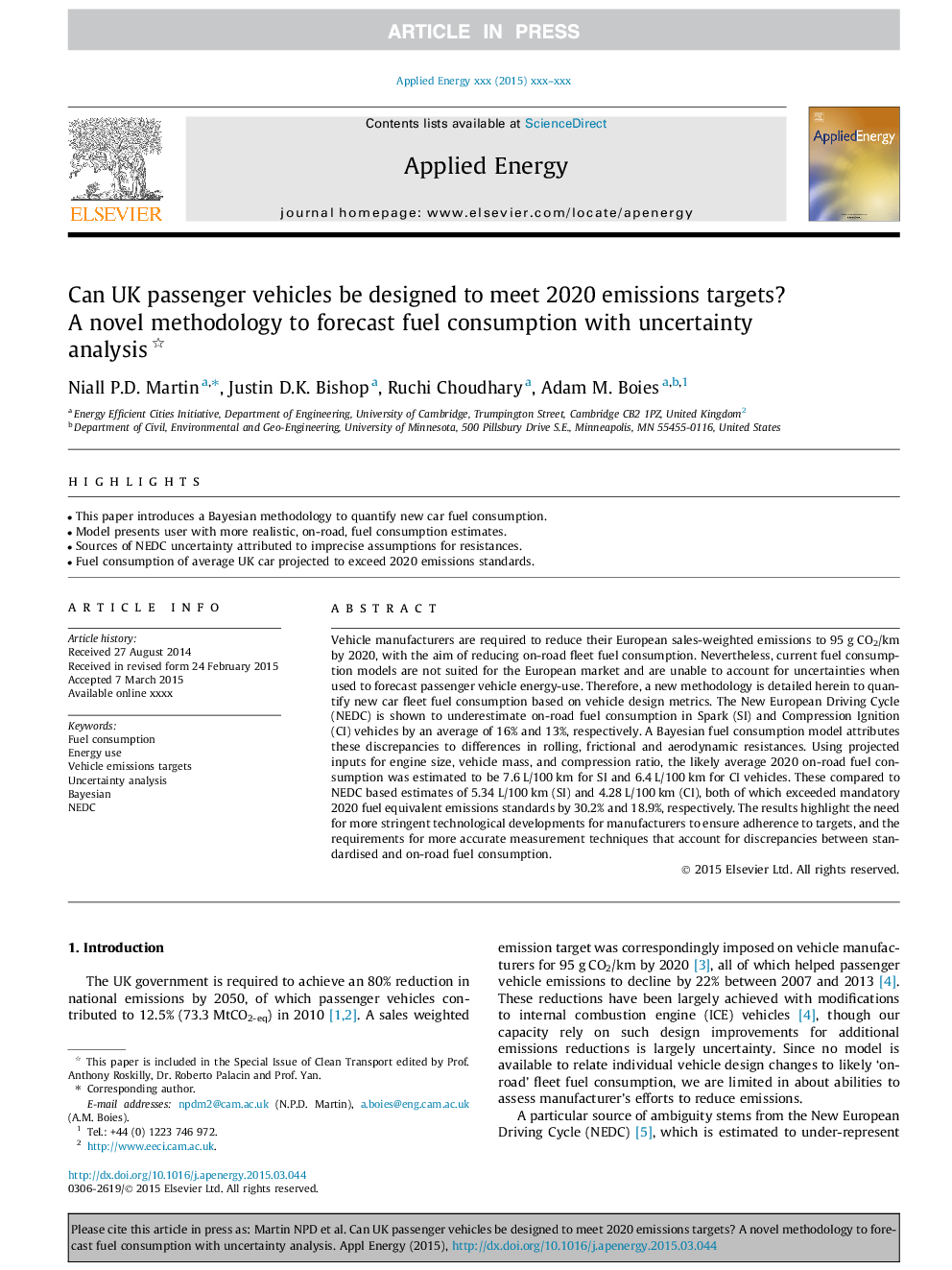| Article ID | Journal | Published Year | Pages | File Type |
|---|---|---|---|---|
| 6686138 | Applied Energy | 2015 | 11 Pages |
Abstract
Vehicle manufacturers are required to reduce their European sales-weighted emissions to 95Â g CO2/km by 2020, with the aim of reducing on-road fleet fuel consumption. Nevertheless, current fuel consumption models are not suited for the European market and are unable to account for uncertainties when used to forecast passenger vehicle energy-use. Therefore, a new methodology is detailed herein to quantify new car fleet fuel consumption based on vehicle design metrics. The New European Driving Cycle (NEDC) is shown to underestimate on-road fuel consumption in Spark (SI) and Compression Ignition (CI) vehicles by an average of 16% and 13%, respectively. A Bayesian fuel consumption model attributes these discrepancies to differences in rolling, frictional and aerodynamic resistances. Using projected inputs for engine size, vehicle mass, and compression ratio, the likely average 2020 on-road fuel consumption was estimated to be 7.6Â L/100Â km for SI and 6.4Â L/100Â km for CI vehicles. These compared to NEDC based estimates of 5.34Â L/100Â km (SI) and 4.28Â L/100Â km (CI), both of which exceeded mandatory 2020 fuel equivalent emissions standards by 30.2% and 18.9%, respectively. The results highlight the need for more stringent technological developments for manufacturers to ensure adherence to targets, and the requirements for more accurate measurement techniques that account for discrepancies between standardised and on-road fuel consumption.
Related Topics
Physical Sciences and Engineering
Energy
Energy Engineering and Power Technology
Authors
Niall P.D. Martin, Justin D.K. Bishop, Ruchi Choudhary, Adam M. Boies,
